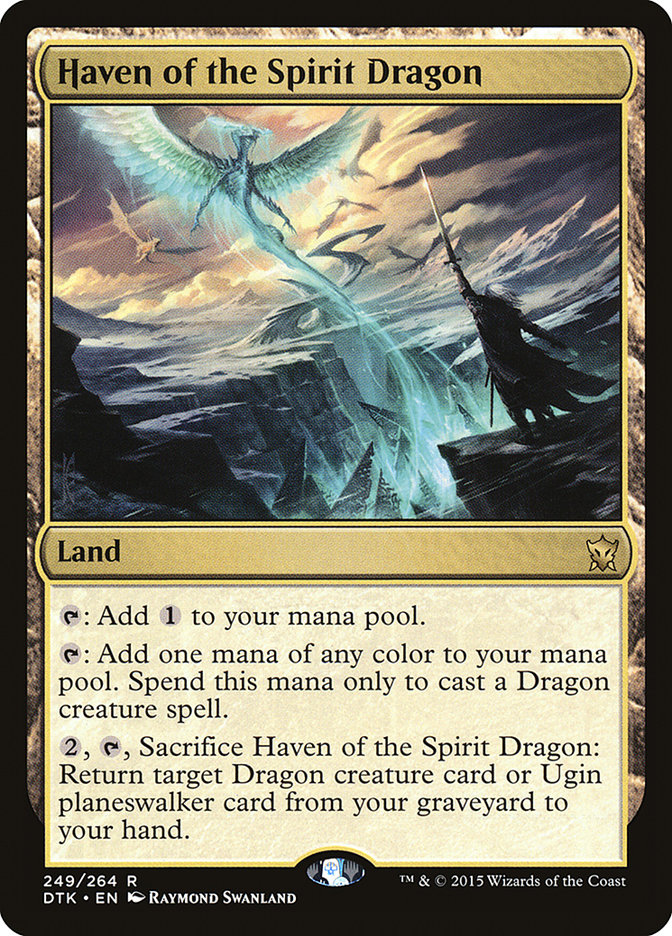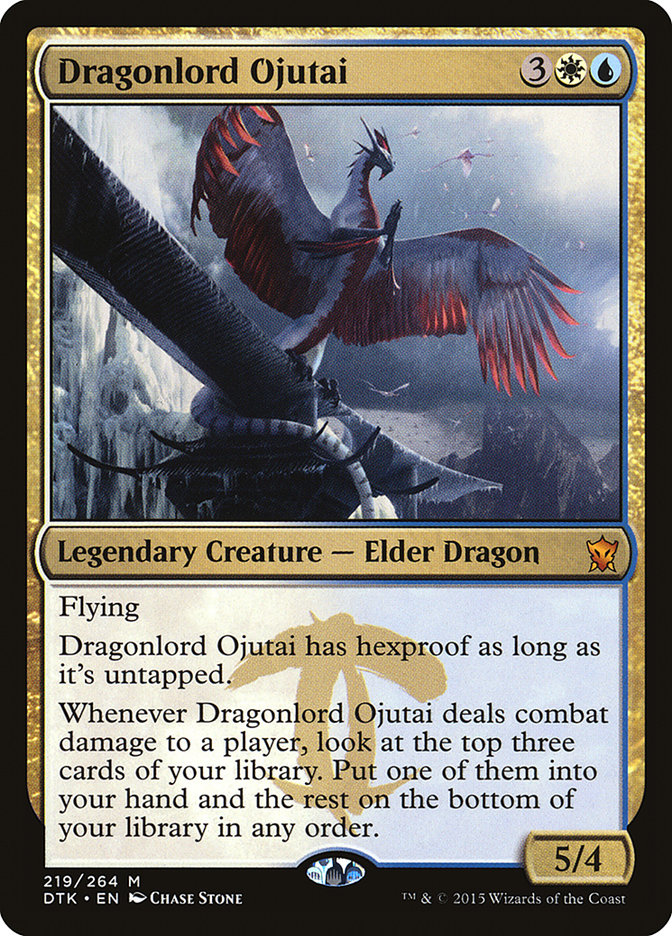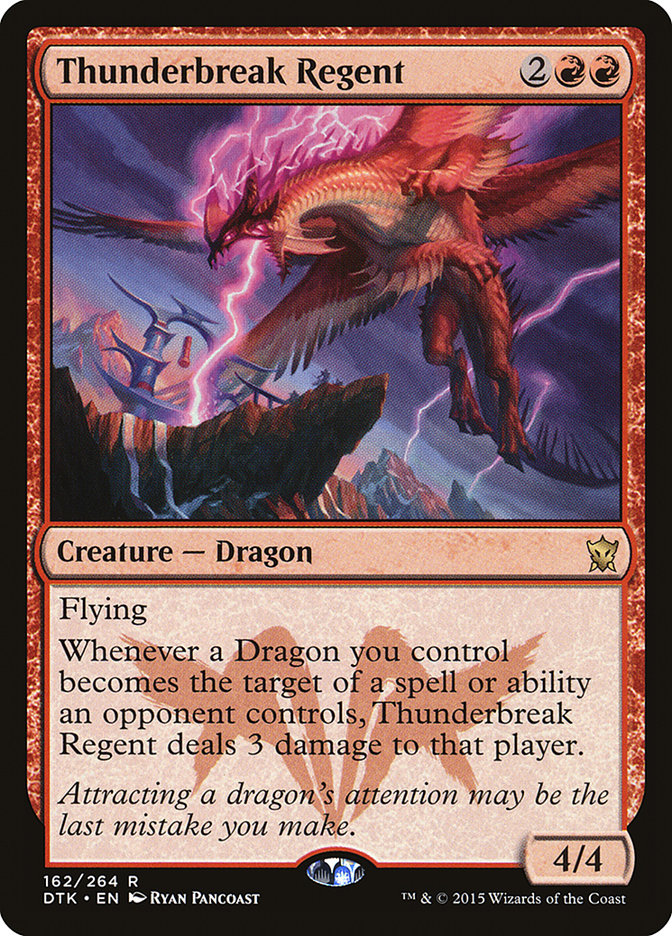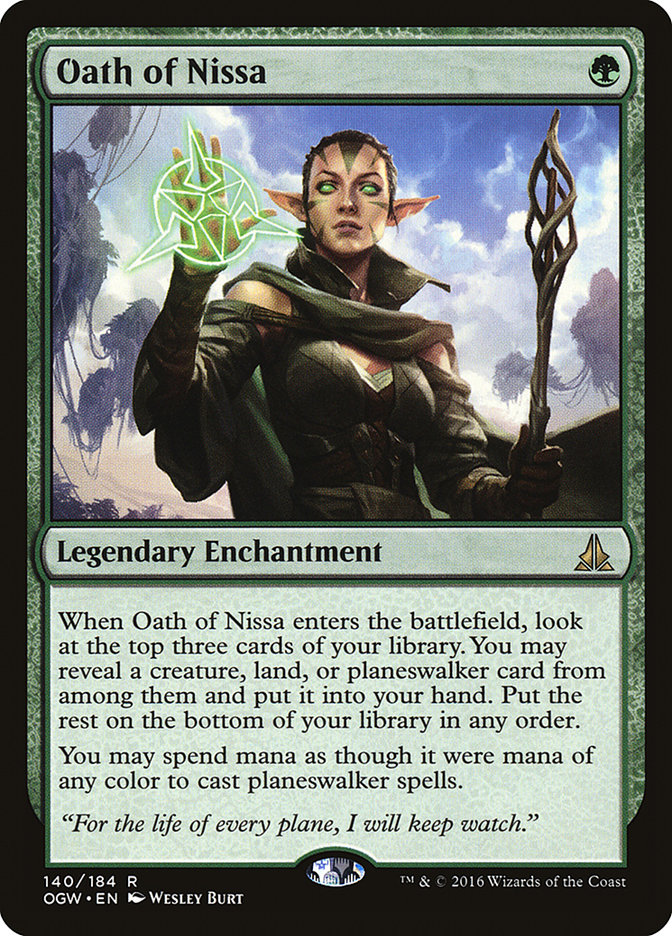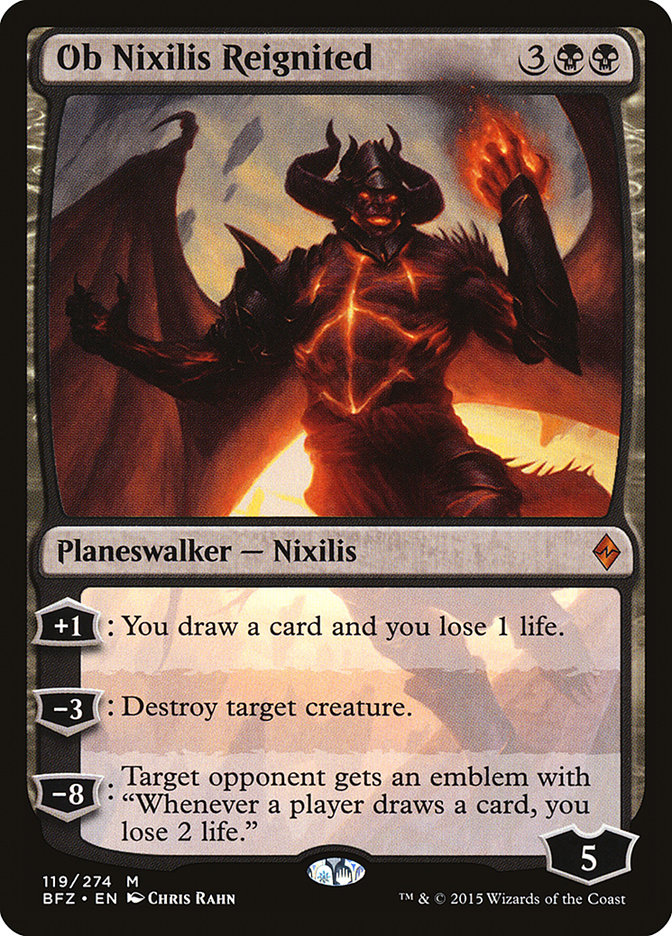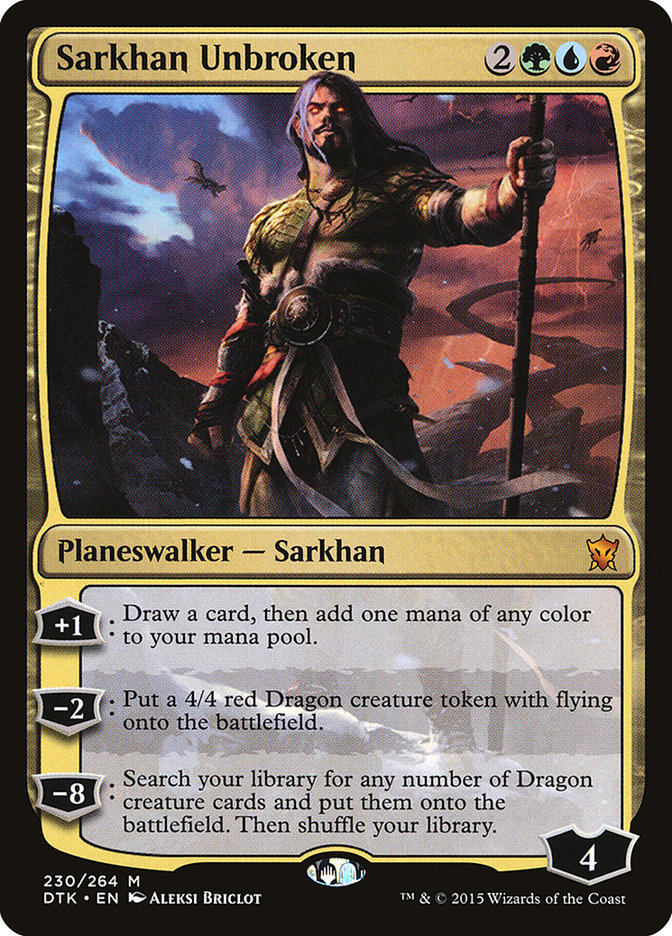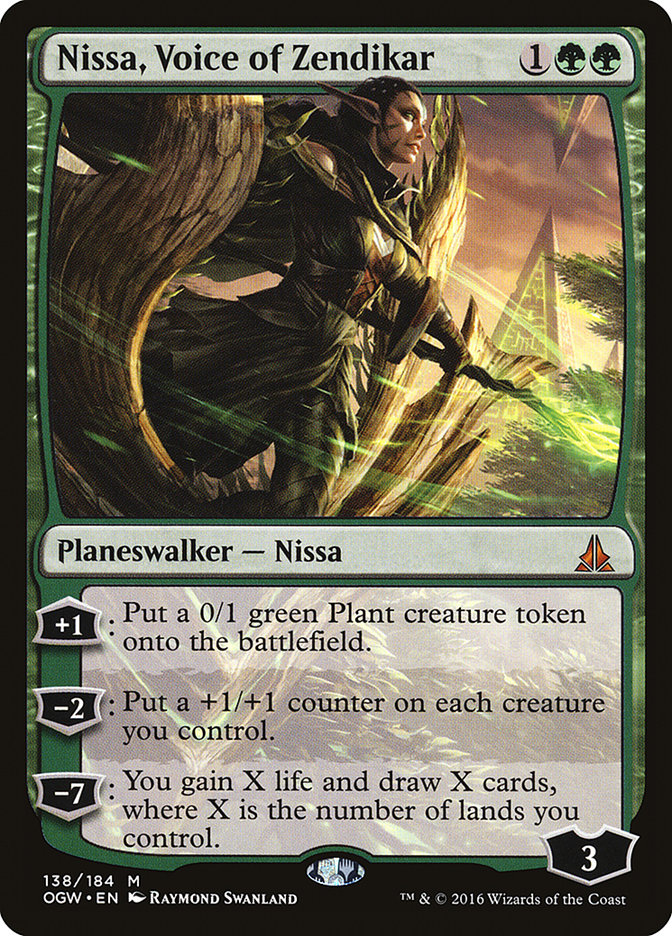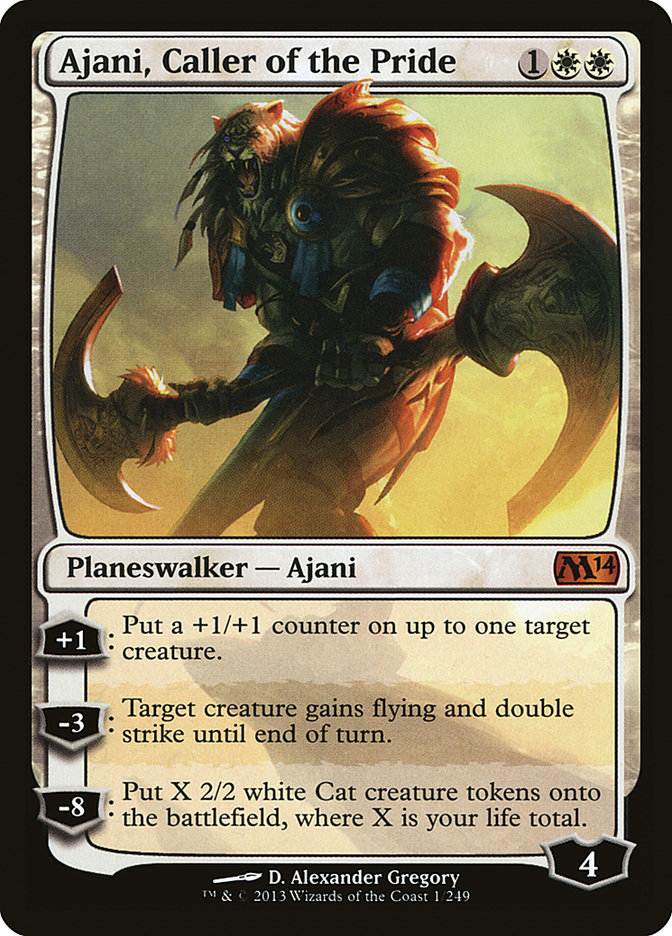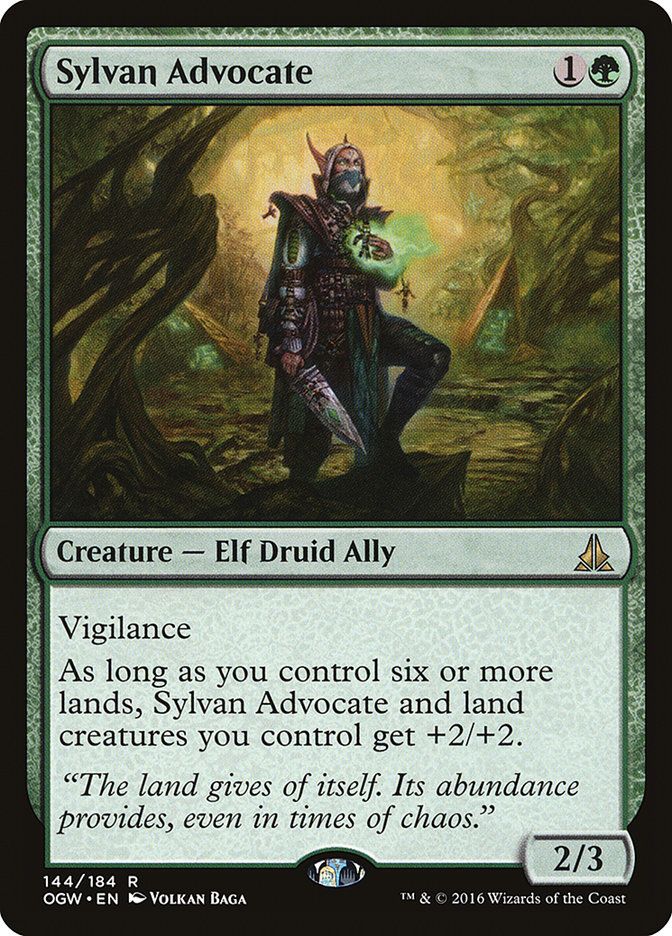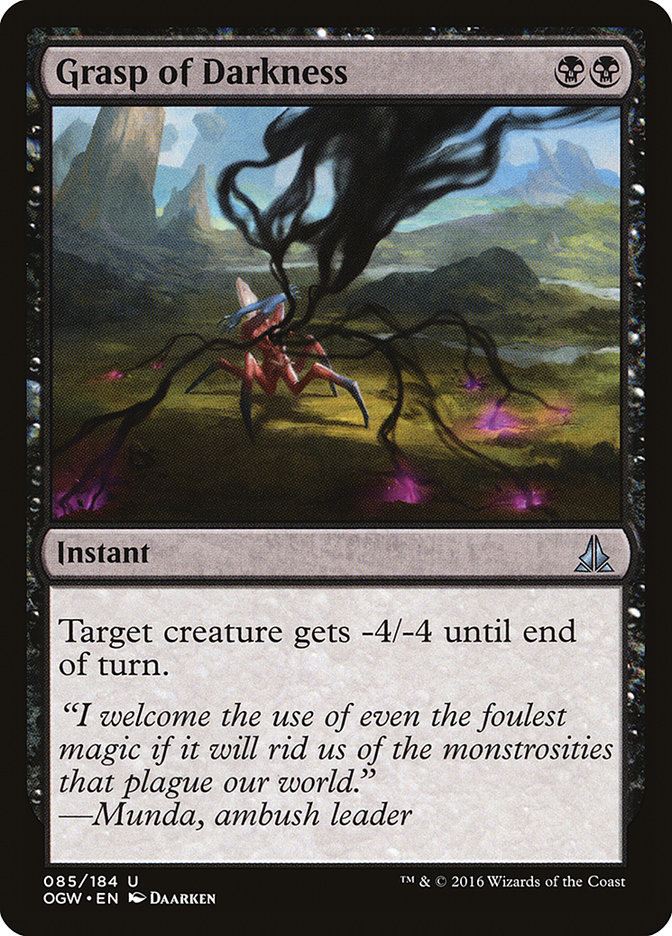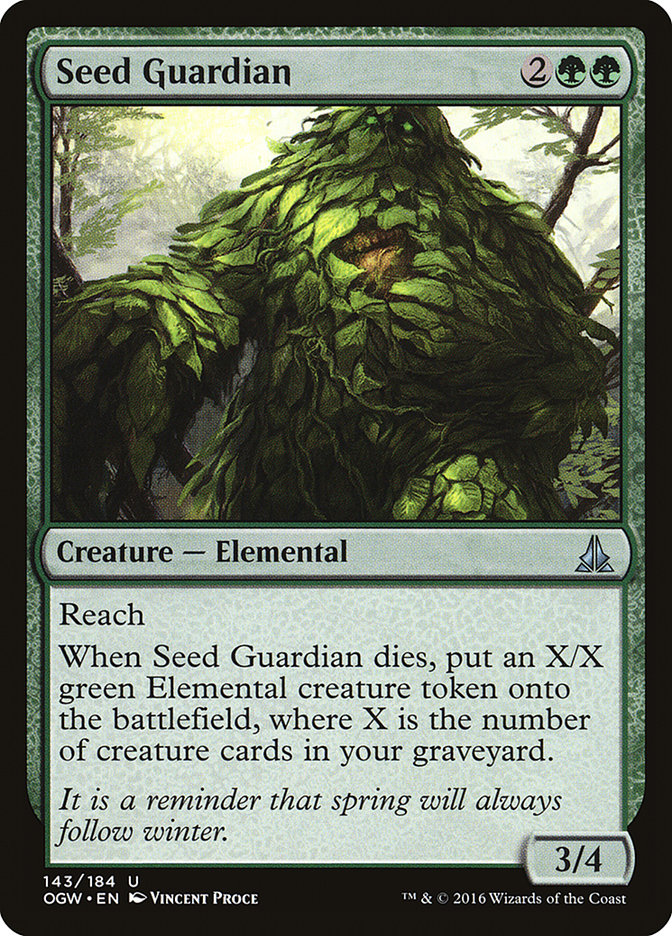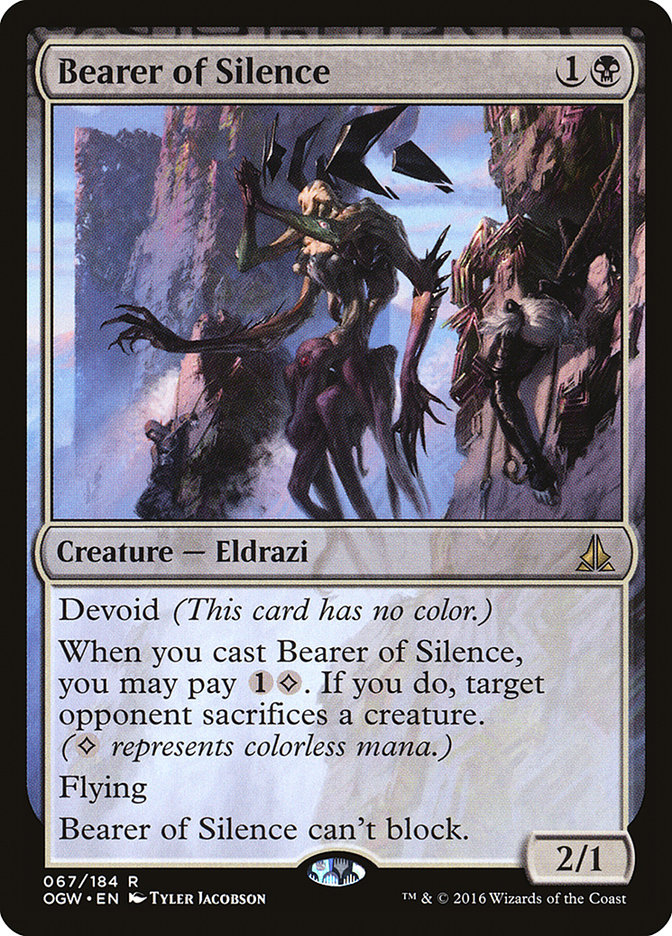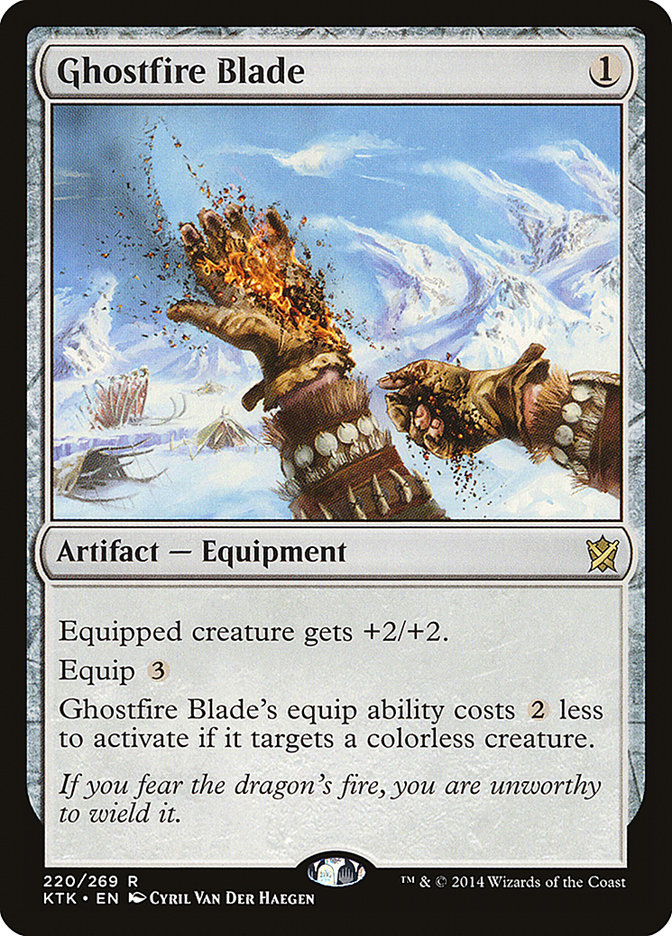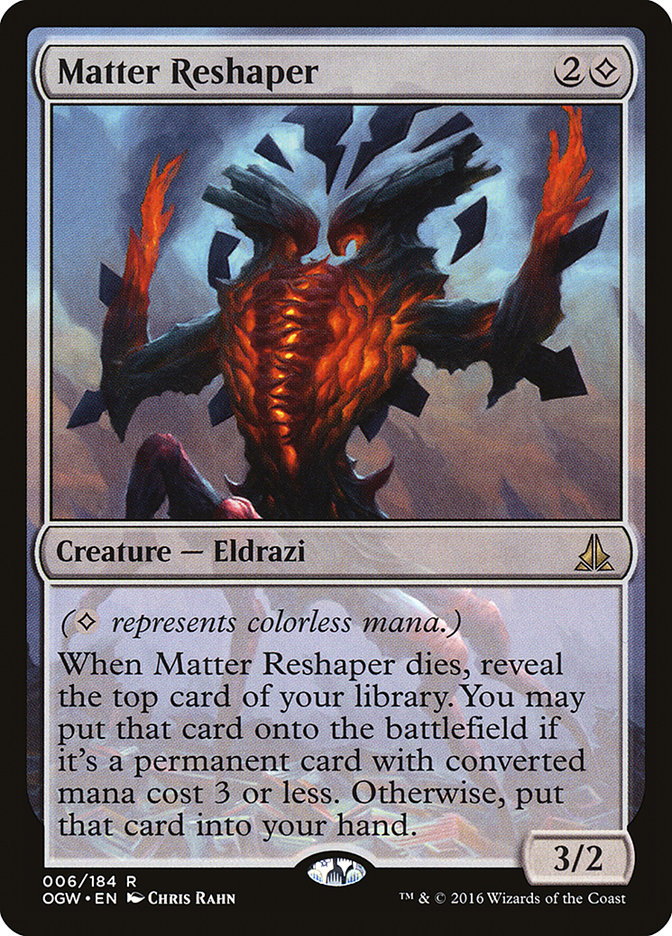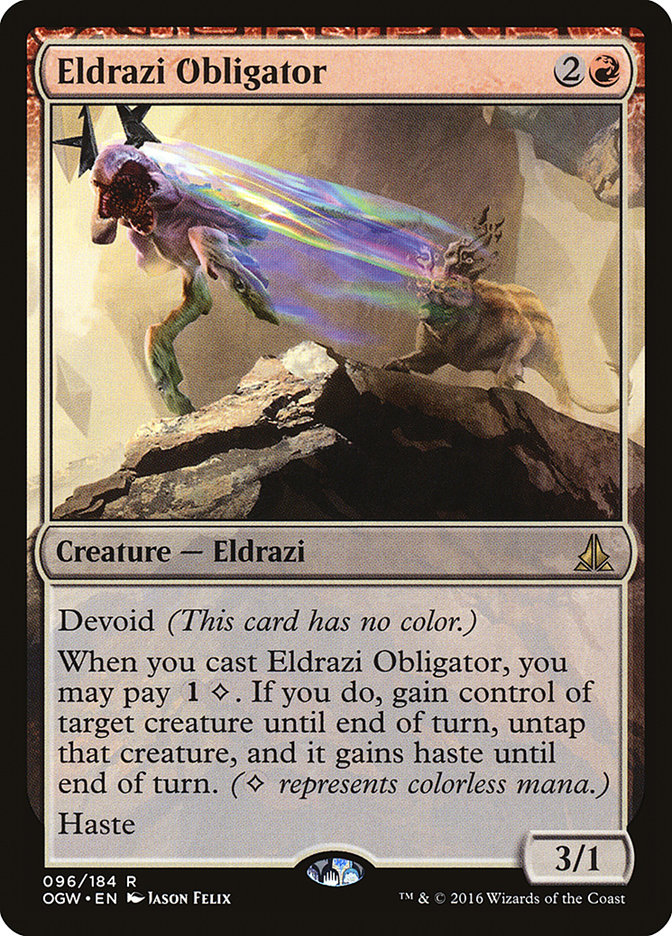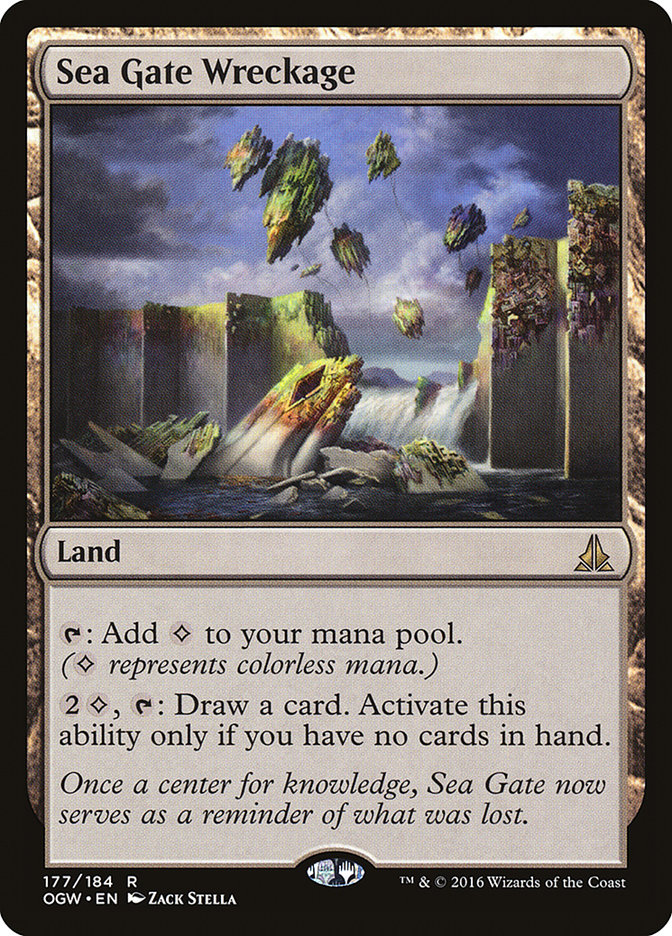The weeks leading up to the release of a new set is always my favorite time to be a Magic player. All of the excitement and speculation about the upcoming cards before anyone has really had a chance to play with them – it’s almost electric. And Oath of the Gatewatch is one of the most exciting sets in recent memory, with the new colorless mana mechanic turning upside down things we’ve long taken for granted about deck construction.
So why is it that I’m kind of bummed that the Prerelease is so soon?
Well, as I mentioned my last article, in the final week of the old Standard, I put together a sweet new deck made up of pretty much all of the cards I really wanted to play. That deck – whether you want to call it Four-Color Dragons, or Temur White, or whatever – took me to a 12-3 record at #GPOAK, good for 20th place, and just a single win outside the Top 8. The deck was an absolute blast and performed well against a wide variety of matchups. I wish I had another opportunity to play it before the entire format changes for Oath of the Gatewatch next weekend at #SCGATL!
Here’s what I played:
Creatures (25)
- 4 Rattleclaw Mystic
- 2 Dragonlord Atarka
- 4 Scaleguard Sentinels
- 4 Thunderbreak Regent
- 3 Dragonlord Dromoka
- 3 Den Protector
- 2 Dragonlord Ojutai
- 3 Nissa, Vastwood Seer
Planeswalkers (2)
Lands (25)
Spells (8)

Two of my losses were to red and green aggro decks, though I also beat two of them as well. The other loss was a close one to Gregory Orange playing Esper Dragons at the end of the first day. My wins included three Abzan, one Jeskai, and one Eldrazi Ramp opponent, which at least illustrates that this deck has the tools to compete with many of the top players in the metagame – or at least what the metagame used to look like.
I don’t want to spend too much time talking about the specifics of the card choices and everything, since Standard is going to be turned on its head by the new set very soon, but I did want to share it for those of you who may want an awesome Dragon list to use as a basis for your own deckbuilding experiments in the new environment.
Also, amusing note: except for Rattleclaw Mystic, Nissa, and lands, every single card in my main deck is from Dragons of Tarkir.
There aren’t any cards from Oath of the Gatewatch that immediately jump out at me as potential inclusions for this deck. The only Dragon, Tyrant of Valakut, looks to be costed more for Limited than Constructed play. Oath of Nissa has some appeal, but in a deck with lands that enter the battlefield tapped, it can be hard to find a window to play even a one-mana filtering card without hindering your curve.
In any case, let’s take a look at some of the cards from the new set that stand out to me, whether they have a home in a sweet Dragon deck or not.
While I don’t think it fits in my Dragon deck, I do think Oath of Nissa is a very exciting card. As I joked on Twitter, it finds all of the cards I want to put in my deck anyway, seeing as I always jam my decks full of creatures and planeswalkers. As such, my decks are usually at the mercy of their draws, since it’s rare to find much deck manipulation in green. Oath of Nissa breaks that pattern, offering the chance to dig for what you need to, even us honest folk with honest creatures.
The problem with Oath of Nissa, as I mentioned above, is that creature decks generally depend more on hitting their curve than their spell-based counterparts. When you’re playing a proactive game and trying to apply pressure, you don’t have the same luxury of spending a mana here and there to improve your draws. With so much of the mana fixing in Standard coming from lands that enter the battlefield tapped, you often can’t even use your first turn to play Oath because you need to play something like a Frontier Bivouac instead.
That said, it’s worth noting that Oath of Nissa can also work as mana fixing of a sort, since lands are one of the card types it can find. It might be possible to build a deck that eschews enters-the-battlefield-tapped lands almost entirely and instead leans on Oath to dig for needed lands. Oath also intrinsically fixes mana for planeswalkers, which could lead to some very interesting possible decks featuring Gideon, Ob Nixilis Reignited, and Sarkhan Unbroken all working together.
That may be a stretch, since you’re clearly not going to draw Oath every game, but a five-color mana fixer attached to a selective card draw for one mana is certainly worth trying to build around, even if it isn’t going to have a home in every green deck.
Nissa is also not a card that ought to end up in every green deck, but it has the potential to be very powerful where it does fit. Three-casting-cost planeswalkers have a good track record, with both Liliana of the Veil and Ajani, Caller of the Pride putting up strong results during their times in Standard. Nissa isn’t as obviously powerful as either, but she has the characteristics that have historically proven to make a planeswalker a winner.
Her +1 ability to make a 0/1 plant may seem anemic by itself, but it serves to help protect her from opposing creatures in combat. If you have Nissa and your opponent has a single non-flying, non-trampling creature, it’s going to need help to get through and actually damage her. In the meantime, you can play out other creatures to take advantage of her minus ability to pump your team, or just try to build to her ultimate to refill your hand.
G/W Megamorph was among the most popular decks at Pro Tour Battle for Zenikdar, but it largely fell out of favor in the wake of that tournament due to the rise of Abzan as a generally stronger alternative. I’m curious whether Nissa may help revitalize G/W by offering it a second planeswalker alongside Gideon that can generate a token army and can also take advantage of the creature-jammed boards that cards like Deathmist Raptor and Hangarback Walker tend to generate. That deck always had a penchant for playing long, drawn-out games in which all of Nissa’s abilities could prove useful.
Nissa could also fit well into the less popular (but definitely super sweet) Hardened Scales deck, doubling the effectiveness of her -2 ability to pump your entire team. Now that would be sweet.
It’s no Scaleguard Sentinels – at least not on turn 2 – but what is, really? Actually, in many ways, Sylvan Advocate may even be better than the Sentinels. A huge part of my reasoning to play Sentinels in the first place was that I wanted a two-drop that didn’t die to Fiery Impulse immediately, because trading your second turn for your opponent’s otherwise unused mana on turn 1 is a huge tempo loss. Sylvan Advocate passes that test, since it starts as a 2/3 immediately.
Crucially, though, Sylvan Advocate remains relevant even into the late game. Scaleguard Sentinels may rule the roost as a 3/4 on turn 2, but once things like Tasigur, Siege Rhino, and Anafenza hit the table, they lose a lot of their impact. Drawing Sylvan Advocate on turn 8, however, is still great – you get a 4/5 creature for just two mana!
And it has vigilance, too. Vigilance is an ability that is very easy to overlook, but it’s quite relevant, especially against decks like Atarka Red. Vigilance allows you to both pressure your opponent and defend yourself at the same time, ensuring that your opponent does not have an infinite timeline in which to draw their Become Immense / Temur Battle Rage combo to kill you.
And on top of all of that, Sylvan Advocate even buffs your lands. It’s easy to miss the “and land creatures you control” portion of the text box, but it applies to both creature land cards like Lumbering Falls and Shambling Vent as well as lands animated by Awaken.
I was actually briefly messing around with a G/B midrange deck last season, and one thing I liked about it was that my Rakshasa Deathdealers remained major threats throughout the game despite being two-drops. Sylvan Advocate does the same and increases the threat of other cards in your deck too. I expect it’s a card I’ll find myself playing quite a bit in the coming months.
One of the things I found playing that G/B midrange deck – as well as my various Temur Black and Sultai brews – was that life gain is a valuable tool in the current Standard format. With the amount of incidental damage from things like fetchlands and the like, it’s easy to find yourself effectively starting down five life in a game, and fifteen is a lot easier for your opponents to deal than twenty much of the time. Remarkably, prior to Oath of the Gatewatch, there was not a single tournament-level card besides Foul Tongue Invocation that offered meaningful lifegain attached to another effect outside of the color white. You could find cards like Feed the Clan or Jaddi Offshoot for dedicated lifegain, but if you wanted lifelink or even just a few points of life tacked on to an otherwise competitive card, you had to play something like Siege Rhino, Seeker of the Way, Soulfire Grand Master, or Sorin, Solemn Visitor.
That’s why I was excited to see Kalitas, Traitor of Ghet on the Oath of the Gatewatch spoiler. It may not look like much upfront – a 3/4 lifelink creature for four mana is hardly earthshattering – but it offers black decks something they don’t otherwise have in Standard: a way to get some of that lost life back.
That lifelinking body also happens to be attached to a very powerful effect. Generating a 2/2 Zombie every time one of your opponent’s creatures dies can generate a lot of value very quickly, especially alongside cheap removal like Fiery Impulse or Murderous Cut. So many of the decks in Standard right now look to grind you out with card draw and removal spells of their own, and they can often struggle against cards that generate multiple bodies for a single card. Kalitas can do just that, while also threatening to grow huge and end the game quickly if left unchecked. Even if he is killed after getting a single big hit in, his lifelink may very well buy you quite a bit of time.
Mostly I want to see Kalitas in play against a Four-Color Rally deck. You sacrifice how many creatures? OK, I’m going to need a whole lot of Zombie tokens…
This is a reprint, but that doesn’t make it any less worth noting. Cards with double-colored casting costs are hard to support with the manabases of a lot of decks in the current Standard, but this card may be powerful enough to justify moving away from a third or fourth color. Reave Soul actually saw a decent amount of play early in the current Standard because it kills Mantis Rider, Warden of the First Tree, and Jace, but Grasp one-ups that and adds Anafenza to the list. That’s virtually a who’s-who of the major threats in Standard, with the exception of Siege Rhino, who’s just out of reach at five toughness.
I don’t expect Grasp to be the sort of card anyone is going to bend over backwards to support when building a deck, but I do expect it to be a strong roleplayer in decks that can afford the casting cost.
I almost passed this one over on the spoiler because of the unimpressive statline, but my recent forays into Sultai graveyard decks made me wonder just how powerful its ability might be. Any creature that can potentially soak up multiple removal spells is worth giving a second look, especially when the second body can be this big. Perhaps the looming threat of Abzan Charm is too much for this to work in Standard right now, but maybe someday…
Remember Gatekeeper of Malakir? It was an extremely powerful card in the Vampire decks that were popular back before the reign of Caw-Blade began, and it looked an awful lot like this. The upfront body was worse – just a 2/2 without any evasion – but the kicker was cheaper. Bearer of Silence costs four to get the body plus Edict effect, but in exchange it both flies and effectively can’t be countered. Sure, you could Ojutai’s Command to stop the 2/1 flier from entering the battlefield, but the sacrifice effect is a “when you cast” trigger much like the other Eldrazi and can’t be stopped by countering the spell itself.
Both parts of that are a huge deal for Esper Dragons, one of the major players in the current Standard in large part thanks to the resilience of Dragonlord Ojutai. Not only can Bearer of Silence easily kill Ojutai the turn he’s played, but it can also kill an Ojutai even if the opponent has Silumgar’s Scorn ready to protect it! That’s a huge deal.
Even before Oath of the Gatewatch, there were a lot of powerful cards for an aggressive devoid deck, like Forerunner of Slaughter, Ghostfire Blade and Dust Stalker. I’ve actually run into decks on Magic Online using the lot of them, and they were doing powerful things, but they mostly seemed to just have a few holes that were filled by less impactful cards simply because there weren’t enough options available. Those holes are likely to be filled easily by the new introductions from Oath of the Gatewatch, and Bearer of Silence is near the top of that list.
Yeah, this guy is also on that list, and from the looks of him, he’s extremely powerful. Matter Reshaper is like some weird cross between a persist creature and a cantrip, since you’re guaranteed to get value in some form whenever he dies. If you’re really lucky, you can just chain Matter Reshapers into one another until your opponent is entirely out of removal – hey, it could be a boat!
One thing worth noting is that the most common thing to hit off of Matter Reshaper is likely to be a land, and lands have a converted mana cost of zero, so they go directly into play. That can let Matter Reshaper ramp you into other, more powerful cards like Reality Smasher, or just to let you play multiple spells in a single turn earlier in the game – or to pay the kicker on powerful effects like Bearer of Silence or Eldrazi Obligator.
Basically, Matter Reshaper dying is pretty much always good for you. In a world full of so many Fiery Impulses, Crackling Dooms, and Murderous Cuts, that’s a nice characteristic to have. It’s hard for your opponents to grind you out when your threats keep replacing themselves!
Speaking of replacing your threats – welcome to the new Library of Alexandria! Sea Gate Wreckage is a powerful tool for any colorless-heavy deck to continue to churn out creatures. I say creatures specifically because the fact that it only works when you’re empty-handed means that you’re unlikely to want to play too many purely reactive cards, because you could easily end up with a hand glutted with cards you are unable to play. But if you’re playing a bunch of cheap threats to pair with Matter Reshaper, you should have no problem dumping your hand to fuel back up again with the Wreckage.
That’s a whole lot of power to get from a land. I imagine that colorless decks will take a lot of tuning to find the right balance between having enough big threats and being able to leverage Sea Gate Wreckage appropriately. I’m not sure what the right mix would look like – but we’ve got to start somewhere, huh?
Here’s my first take on a B/R Eldrazi deck:
Creatures (28)
- 3 Hangarback Walker
- 4 Forerunner of Slaughter
- 2 Dust Stalker
- 3 Eldrazi Mimic
- 2 Reality Smasher
- 2 Thought-Knot Seer
- 4 Bearer of Silence
- 4 Reaver Drone
- 4 Matter Reshaper
Lands (24)
Spells (8)
Sideboard

The mana here is strange, because you want enough colored sources to support Forerunner of Slaugher on turn 2, but also enough colorless sources for the Eldrazi cards. Oddly, playing painlands that produce off-color mana along with sources of one of the deck’s two colors seems to be the best way to do that, as far as I can tell. It’s possible that a better direction is to play just a single color for more consistent mana and access to more colorless utility lands like Rogue’s Passage, but this is the first build I’d want to try, since Forerunner is certainly quite powerful.
As for a less Eldrazi-focused deck – here’s a new take on that G/B midrange deck I’ve been talking about:
Creatures (22)
- 3 Rakshasa Deathdealer
- 3 Whisperwood Elemental
- 4 Den Protector
- 4 Deathmist Raptor
- 4 Catacomb Sifter
- 4 Sylvan Advocate
Planeswalkers (3)
Lands (24)
Spells (11)

The basic idea here is leveraging a bunch of efficient removal, creatures, and planeswalkers that are effective at pretty much every stage of the game. Catacomb Sifter may seem strange here, but it helps ramp into both Whisperwood Elemental and Ob Nixilis Reignited, and the pair of bodies it generates are very effective with Nissa – who also plays very well with the manifests from Whisperwood Elemental, which also plays well with the Raptor/Den Protector engine.
Rakshasa Deathdealer and Sylvan Advocate both play excellent early offense and stay relevant later in the game, with the latter pumping itself, the Hissing Quagmires, and any land awakened by Ruinous Path late in the game.
I tried earlier versions of this deck prior to the new set, but found myself struggling with the mana. Hissing Quagmire is a huge new addition that offers not only mana fixing, but also a meaningful threat in longer games. With the full eight dual lands and zero fetches, this deck ought to be able to consistently cast its spells on time without taking the half dozen or so damage that other decks suffer.
What do you think? What cards stand out to you from Oath of the Gatewatch? What new decks are you looking to build for #SCGATL next weekend?

